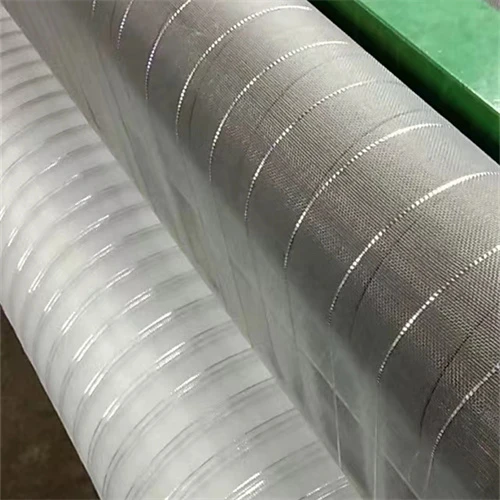-
 Afrikaans
Afrikaans -
 Albanian
Albanian -
 Amharic
Amharic -
 Arabic
Arabic -
 Armenian
Armenian -
 Azerbaijani
Azerbaijani -
 Basque
Basque -
 Belarusian
Belarusian -
 Bengali
Bengali -
 Bosnian
Bosnian -
 Bulgarian
Bulgarian -
 Catalan
Catalan -
 Cebuano
Cebuano -
 China
China -
 Corsican
Corsican -
 Croatian
Croatian -
 Czech
Czech -
 Danish
Danish -
 Dutch
Dutch -
 English
English -
 Esperanto
Esperanto -
 Estonian
Estonian -
 Finnish
Finnish -
 French
French -
 Frisian
Frisian -
 Galician
Galician -
 Georgian
Georgian -
 German
German -
 Greek
Greek -
 Gujarati
Gujarati -
 Haitian Creole
Haitian Creole -
 hausa
hausa -
 hawaiian
hawaiian -
 Hebrew
Hebrew -
 Hindi
Hindi -
 Miao
Miao -
 Hungarian
Hungarian -
 Icelandic
Icelandic -
 igbo
igbo -
 Indonesian
Indonesian -
 irish
irish -
 Italian
Italian -
 Japanese
Japanese -
 Javanese
Javanese -
 Kannada
Kannada -
 kazakh
kazakh -
 Khmer
Khmer -
 Rwandese
Rwandese -
 Korean
Korean -
 Kurdish
Kurdish -
 Kyrgyz
Kyrgyz -
 Lao
Lao -
 Latin
Latin -
 Latvian
Latvian -
 Lithuanian
Lithuanian -
 Luxembourgish
Luxembourgish -
 Macedonian
Macedonian -
 Malgashi
Malgashi -
 Malay
Malay -
 Malayalam
Malayalam -
 Maltese
Maltese -
 Maori
Maori -
 Marathi
Marathi -
 Mongolian
Mongolian -
 Myanmar
Myanmar -
 Nepali
Nepali -
 Norwegian
Norwegian -
 Norwegian
Norwegian -
 Occitan
Occitan -
 Pashto
Pashto -
 Persian
Persian -
 Polish
Polish -
 Portuguese
Portuguese -
 Punjabi
Punjabi -
 Romanian
Romanian -
 Russian
Russian -
 Samoan
Samoan -
 Scottish Gaelic
Scottish Gaelic -
 Serbian
Serbian -
 Sesotho
Sesotho -
 Shona
Shona -
 Sindhi
Sindhi -
 Sinhala
Sinhala -
 Slovak
Slovak -
 Slovenian
Slovenian -
 Somali
Somali -
 Spanish
Spanish -
 Sundanese
Sundanese -
 Swahili
Swahili -
 Swedish
Swedish -
 Tagalog
Tagalog -
 Tajik
Tajik -
 Tamil
Tamil -
 Tatar
Tatar -
 Telugu
Telugu -
 Thai
Thai -
 Turkish
Turkish -
 Turkmen
Turkmen -
 Ukrainian
Ukrainian -
 Urdu
Urdu -
 Uighur
Uighur -
 Uzbek
Uzbek -
 Vietnamese
Vietnamese -
 Welsh
Welsh -
 Bantu
Bantu -
 Yiddish
Yiddish -
 Yoruba
Yoruba -
 Zulu
Zulu
Effective Solutions for Safeguarding Against Hail Damage and Protecting Your Property
The Importance of Hail Protection Nets Safeguarding Crops and Property
The unpredictable nature of weather can wreak havoc on agricultural productivity and property, particularly when hailstorms strike. These sudden bursts of ice pellets can cause significant damage to crops, structures, and vehicles. In recent years, hail protection nets have emerged as a vital solution to mitigate the adverse effects of hail, safeguarding both agricultural investments and property.
Hail is a meteorological phenomenon formed during thunderstorms when supercooled water droplets collide with particles in the atmosphere, creating ice. These ice pellets can range in size from a few millimeters to as large as golf balls or even larger. The impact of hail on crops, such as fruits, vegetables, and grains, can be devastating, leading to substantial economic losses for farmers. According to research, hail can cause crop losses of up to 90% in severe cases, making it imperative for farmers to adopt protective measures.
Hail protection nets offer an effective barrier against these potentially destructive weather events. These nets are typically made from high-strength polyethylene or other durable materials, designed to withstand the extreme conditions often associated with hailstorms. Their installation creates a physical barrier that not only protects crops but also allows sunlight and rain to reach the plants, thereby promoting healthy growth.
One of the primary advantages of using hail protection nets is that they can significantly reduce crop damage during hailstorms. By installing these nets, farmers can safeguard their investments and ensure consistent yields. This protective measure not only helps in maintaining the quality of the produce but also enhances marketability, allowing farmers to fetch better prices for their goods. Moreover, by securing their harvests, farmers can reduce the risk of financial loss, ultimately leading to more sustainable farming practices.
hail protection net

In addition to crops, hail protection nets are also beneficial for protecting property, such as vehicles, glass structures, and animals. Farmers often use these nets in combination with greenhouses, livestock pens, and storage facilities to safeguard their assets from hail damage. This not only ensures the safety of the property but also decreases the long-term maintenance costs associated with repairing hail-damaged structures.
The installation of hail protection nets is a straightforward process. Farmers need to assess their specific needs, including the types of crops they grow and the typical storm patterns in their region. Once this assessment is complete, nets can be installed over the fields, ensuring they are secured to withstand high winds. It's crucial to ensure that the nets are properly tensioned and anchored to provide maximum protection.
Despite the benefits, there are some considerations to keep in mind when using hail protection nets. Cost can be a significant factor, especially for small-scale farmers. While the initial investment may seem high, the potential savings generated from reduced crop losses often make it a worthwhile expenditure. Additionally, maintaining the nets – including regular inspections for wear and tear – is important to ensure their longevity and effectiveness.
The positive impact of hail protection nets extends beyond individual farmers to the larger agricultural sector. By minimizing crop losses, these nets contribute to food security and stability within the market. As more farmers adopt these protective measures, the overall resilience of agricultural systems against extreme weather events improves.
In conclusion, hail protection nets represent a proactive approach to dealing with the unpredictable nature of weather, particularly hailstorms. They serve as a vital tool for farmers, safeguarding crops, properties, and ultimately livelihoods. By investing in these protective measures, farmers can secure their future while promoting sustainable agricultural practices. As climate change continues to amplify weather extremes, the importance of such innovations will only increase, paving the way for a more resilient agricultural landscape.
-
Shipping Plastic Bags for Every NeedNewsJul.24,2025
-
Safety Netting: Your Shield in ConstructionNewsJul.24,2025
-
Plastic Mesh Netting for Everyday UseNewsJul.24,2025
-
Nylon Netting for Every UseNewsJul.24,2025
-
Mesh Breeder Box for Fish TanksNewsJul.24,2025
-
Expanded Steel Mesh Offers Durable VersatilityNewsJul.24,2025











